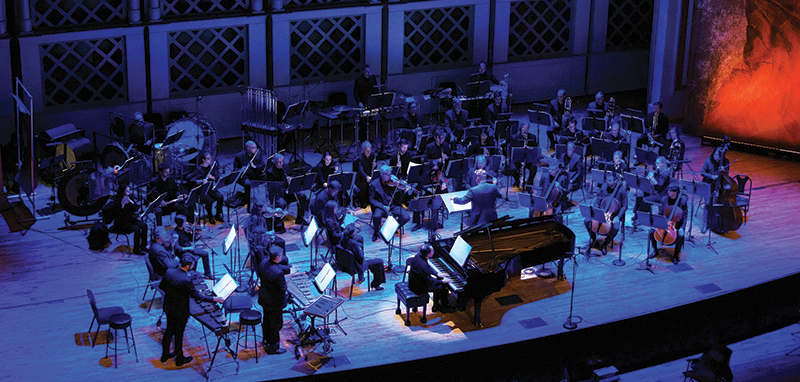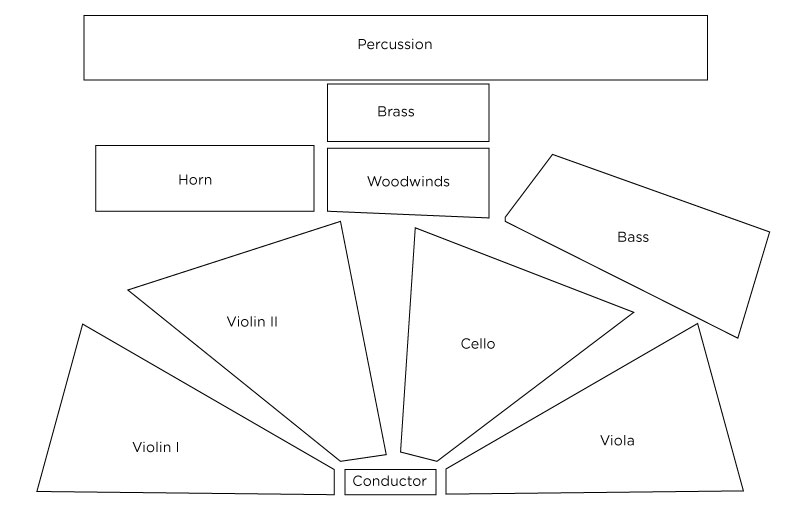INSIDE THE ORCHESTRA: Musical Chairs
by Tyler M. Secor
“Inside the Orchestra” seeks to demystify the many routines or rituals that are often part of any orchestra concert. From the modern perspective, these routines seem fixed, but historical context demonstrates that the typical “orchestra concert” has rapidly and significantly changed.

The CSO pictured in non-antiphonal seating Credit: Mark Lyons
Where instruments and instrument families sit on stage is as varied as the pieces played and the venues in which those pieces are performed. Diagrams and drawn pictures from Europe depicting orchestra seating can be found as far back as the late-17th century, but those early depictions show smaller ensembles, scenes at parties, or ensembles in theatre pits or balconies accompanying operas or plays. The simile of the modern-day orchestra began to emerge in the 18th century, but the average size of the orchestra varied from locale to locale and so did the space to house the orchestra.
In the 19th century, composers began to write pieces for bigger and bigger orchestras, creating the need for larger stages and houses and requiring changes to orchestra seating and arrangements of instruments. In the 19th and 20th century, composers entered the orchestra seating fray and began to specify the seating for their works within the scores. For example, the unique seating of Olivier Messiaen’s Des canyons aux étoiles…. is clearly spelled out in the score. Moreover, evolving instrument design and technological advances played a role in where members of the orchestra sat, not to mention the acoustics of the hall and the acoustics of the instruments themselves.

Creative Partner Matthias Pintscher conducting Olivier Messiaen’s Des canyons aux étoiles… for CSO Proof in March 2024. Credit: JP Leong
So, answering the question “why does the orchestra sit like that?” is complicated. However, there are some widely accepted answers, even in scores that do not include a clearly drawn seating chart. The modern-day orchestra has generally accepted two standard models: antiphonal and non-antiphonal seating. Perhaps the most common in the U.S. is non-antiphonal, which has violin I, violin II, cello and viola placed left to right in front of the conductor. Within this configuration, there are variations; for example, the cello and viola may swap places. Antiphonal seating has violin I, viola, cello and violin II placed left to right in front of the conductor. Antiphonal also has its variations, sometimes swapping the placement of the violas and cellos.
Who sits where for each concert is a complex formula of history, acoustics, composer/conductor preferences and stage design, but the goal is the same: the best expression of the music for the audience.

Non-antiphonal seating

Antiphonal seating